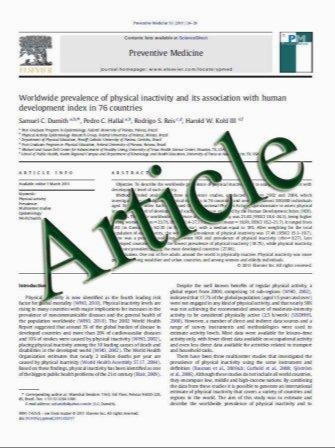Factors affecting Ab plasma levels and their utility as biomarkers in ADNI
- نوع فایل : کتاب
- زبان : انگلیسی
- مؤلف : Jon B. Toledo Hugo Vanderstichele Michal Figurski Paul S. Aisen Ronald C. Petersen Michael W. Weiner Clifford R. Jack Jr William Jagust
- چاپ و سال / کشور: 2011
Description
Previous studies of Ab plasma as a biomarker for Alzheimer’s disease (AD) obtained conflicting results. We here included 715 subjects with baseline Ab1-40 and Ab1-42 plasma measurement (50% with 4 serial annual measurements): 205 cognitively normal controls (CN), 348 patients mild cognitive impairment (MCI) and 162 with AD. We assessed the factors that modified their concentrations and correlated these values with PIB PET, MRI and tau and Ab1-42 measures in cerebrospinal fluid (CSF). Association between Ab and diagnosis (baseline and prospective) was assessed. A number of health conditions were associated with altered concentrations of plasma Ab. The effect of age differed according to AD stage. Plasma Ab1-42 showed mild correlation with other biomarkers of Ab pathology and were associated with infarctions in MRI. Longitudinal measurements of Ab1-40 and Ab1-42 plasma levels showed modest value as a prognostic factor for clinical progression. Our longitudinal study of complementary measures of Ab pathology (PIB, CSF and plasma Ab) and other biomarkers in a cohort with an extensive neuropsychological battery is significant because it shows that plasma Ab measurements have limited value for For the Alzheimer’s Disease Neuroimaging Initiative: Data used here were produced by the ADNI Biomarker Core or obtained from the ADNI database (www.loni.ucla.edu/ADNI). Many ADNI investigators contributed to ADNI but did not participate in the analysis of the data presented here or in the writing of this report. ADNI investigators are listed at www.loni.ucla.edu\ADNI\Collaboration\ADNI_Manuscript_ Citations.pdf). Electronic supplementary material The online version of this article (doi:10.1007/s00401-011-0861-8) contains supplementary material, which is available to authorized users. J. B. Toledo M. Figurski V. M.-Y. Lee J. Q. Trojanowski (&) L. M. Shaw (&) Department of Pathology and Laboratory Medicine, Institute on Aging, Center for Neurodegenerative Disease Research, University of Pennsylvania School of Medicine, HUP, Maloney 3rd (JQT) or 7th (LMS) Floor, 36th and Spruce Streets, Philadelphia, PA 19104-4283, USA e-mail: trojanow@mail.med.upenn.edu L. M. Shaw e-mail: Les.Shaw@uphs.upenn.edu H. Vanderstichele Department of Diagnostic Development, Innogenetics NV, Ghent, Belgium P. S. Aisen University of California at San Diego, San Diego, CA 92093, USA R. C. Petersen Mayo Clinic College of Medicine, Rochester, MN 55905, USA M. W. Weiner Department of Radiology Medicine and Psychiatry, University of California at San Francisco, San Francisco, CA, USA C. R. Jack Jr Mayo Clinic, Rochester, MN, USA W. Jagust Helen Wills Neuroscience Institute University of California, Berkeley, CA, USA C. Decarli Department of Neurology, University of California, Sacramento, CA, USA A. W. Toga Laboratory of Neuro Imaging, Department of Neurology, University of California at Los Angeles School of Medicine, Los Angeles, CA, USA 123 Acta Neuropathol DOI 10.1007/s00401-011-0861-8 disease classification and modest value as prognostic factors over the 3-year follow-up. However, with longer follow-up, within subject plasma Ab measurements could be used as a simple and minimally invasive screen to identify those at increased risk for AD. Our study emphasizes the need for a better understanding of the biology and dynamics of plasma Ab as well as the need for longer term studies to determine the clinical utility of measuring plasma Ab.
Acta Neuropathol DOI 10.1007/s00401-011-0861-8 Received: 21 June 2011 / Revised: 13 July 2011 / Accepted: 13 July 2011


